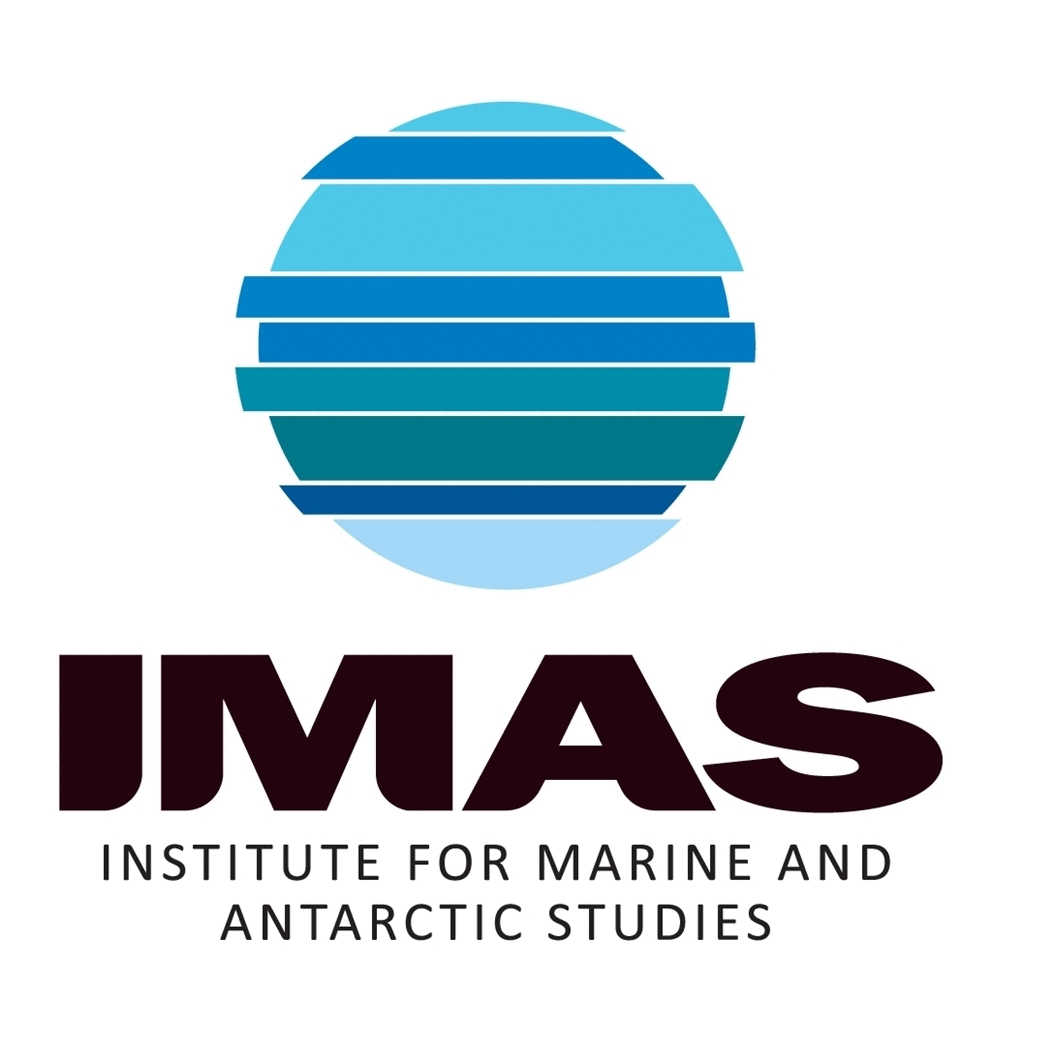EARTH SCIENCE | BIOLOGICAL CLASSIFICATION | PLANTS | MACROALGAE (SEAWEEDS)
Type of resources
Topics
Keywords
Contact for the resource
Provided by
Years
-
Kelps are in global decline due to climate change, including ocean warming. To identify vulnerable species, we need to identify their tolerances to increasing temperatures and whether tolerances are altered by co-occurring drivers such as inorganic nutrient levels. This is particularly important for those with restricted distributions, which may already be experiencing thermal stress. To identify thermal tolerance of the range restricted kelp Lessonia corrugata, we conducted a laboratory experiment on juvenile sporophytes to measure performance (growth, photosynthesis) across its thermal range (4 – 22 °C). We found the upper thermal limit for growth and photosynthesis to be ~ 22 – 23 °C, with an optimum of ~ 16 °C. To determine if elevated inorganic nitrogen availability could enhance thermal tolerance, we compared performance of juveniles under low (4.5 µmol/day) and high (90 µmol/day) nitrate conditions at and above the thermal optimum (16 – 23.5 °C). Nitrate enrichment did not enhance thermal performance at temperatures above the optimum but did lead to elevated growth rates at the thermal optimum 16 °C. Our findings indicate L. corrugata is likely to be extremely susceptible to moderate ocean warming and marine heatwaves. Peak sea surface temperatures during summer in eastern and northeastern Tasmania can reach up to 20 – 21 °C and climate projections suggest that L. corrugata’s thermal limit will be regularly exceeded by 2050 as south-eastern Australia is a global ocean-warming hotspot. By identifying the upper thermal limit of L. corrugata we have taken a critical step in predicting the future of the species in a warming climate.
-

An aerial survey was conducted for giant kelp (Macrocystis pyrifera) on the east coast of Tasmania from Eddystone Point to Southeast Cape. This survey represents part of a series of similar surveys, with historic aerial surveys having been conducted in 1986 and 1999. The survey was conducted via light aircraft. Areas of visable Macrocystis pyrifera beds were marked on topographical land tenure maps using landmarks as references, and complimentary photo footage was collected.
-
Annotations of Centrostephanus rogersii sea urchin barrens derived from towed video at selected key abalone blocks along the east coast of Tasmania. The purpose of the study was to examine the patch dynamics of urchin barrens and to provide validation for the identification of urchin barrens from multibeam surveys.
-
In coastal ecosystems, seaweeds provide habitat and a food source for a variety of species including herbivores of commercial importance. In these systems seaweeds are the ultimate source of energy with any changes in the seaweeds invariably affecting species of higher trophic levels. Seaweeds are rich sources of nutritionally important compounds such as polyunsaturated fatty acids (PUFA) and are particularly rich in long-chain (≥ C20) PUFA (LC-PUFA). In southern Australia, the ‘Great Southern Reef’ has one of the most diverse assemblages of seaweeds in the world, which support highly productive fisheries and have been recognised as a promising resource of omega-3 LC-PUFA. Despite this, there is little information on the biochemical composition of most species and how it varies between sites and seasons. To address this knowledge gap, we undertook a survey to assess seasonal variability in the biochemical composition (fatty acids and nitrogen content) of abundant understory seaweeds across three sites in eastern Tasmania. The availability of nutritional compounds differed between sites and was primarily driven by differences in the biomass and the biochemical composition of the nutritious red seaweeds at each site. This variability may explain regional differences in the productivity of commercial fisheries. At the species level, seasonal changes in fatty acid composition were highly variable between species and sites, indicating that multiple environmental drivers influence fatty acid composition of seaweeds in this system. This finding suggests that commercial harvest of seaweeds from eastern Tasmania will need to consider species and site-specific variability in fatty acid composition.
-
Most research investigating how ocean warming and acidification will impact marine species has focused on visually dominant species, such as kelps and corals, while ignoring visually cryptic species such as crustose coralline algae (CCA). CCA are important keystone species that provide settlement cues for invertebrate larvae and can be highly sensitive to global ocean change. However, few studies have assessed how CCA respond to low emission scenarios or conditions. In a laboratory experiment, we examined the responses of temperate CCA assemblages to combined warming and acidification projected under low, medium, and high emissions. Net calcification and net photosynthesis significantly declined in all emissions scenarios, while significant reductions in relative growth rates and increases in percentage bleaching were observed in the highest emission scenario. The negative responses of CCA to both low and medium emissions suggest that they may be adversely impacted by combined warming and acidification by 2030 if current emissions are sustained. This will have far reaching consequences for commercially important invertebrates that rely on them to induce settlement of larvae. These findings highlight the need to take rapid action to preserve these critical keystone species and the valuable services they provide.
-
The Marine Futures Project was designed to benchmark the current status of key Western Australian marine ecosystems, based on an improved understanding of the relationship between marine habitats, biodiversity and our use of these values. Approximately 1,500 km2 of seafloor were mapped using hydroacoustics (Reson 8101 Multibeam), and expected benthic habitats "ground-truthed" using towed video transects and baited remote underwater video systems. Both sources of information were then combined in a spatial predictive modelling framework to produce fine-scale habitat maps showing the extent of substrate types, biotic formations, etc. Surveys took place across 9 study areas, including Jurien Bay. The Jurien Bay marine environment is highly diverse, and is home to a wide variety of species, including sea lions and sea birds on the many offshore islands. Limestone reef and seagrass habitats in the area support a diverse fish and invertebrate fauna, and a local crayfishing industry is based around the Western Rock Lobster (Panulirus cygnus).
-
The Marine Futures Project was designed to benchmark the current status of key Western Australian marine ecosystems, based on an improved understanding of the relationship between marine habitats, biodiversity and our use of these values. Approximately 1,500 km2 of seafloor were mapped using hydroacoustics (Reson 8101 Multibeam), and expected benthic habitats "ground-truthed" using towed video transects and baited remote underwater video systems. Both sources of information were then combined in a spatial predictive modelling framework to produce fine-scale habitat maps showing the extent of substrate types, biotic formations, etc. Surveys took place across 9 study areas, including Rottnest Island, a popular family holiday destination just 20 km off the Perth coast. One of the main drawcards of the island is the diverse marine life inhabiting the surounding waters, which Western Australian locals and tourists can experience by snorkelling, diving, boating and fishing. The marine environment around Rottnest includes seagrass meadows, kelp-covered reef tops, coral patches, and sponge gardens in deeper water. As a result of the warm, southward flowing Leeuwin Current, the island represents the southern limit of the distributions of many tropical corals and fish. The marine life around Rottnest therefore represents a unique mix of tropical and temperate species and habitats.
-
The Marine Futures Project was designed to benchmark the current status of key Western Australian marine ecosystems, based on an improved understanding of the relationship between marine habitats, biodiversity and our use of these values. Approximately 1,500 km2 of seafloor were mapped using hydroacoustics (Reson 8101 Multibeam), and expected benthic habitats "ground-truthed" using towed video transects and baited remote underwater video systems. Both sources of information were then combined in a spatial predictive modelling framework to produce fine-scale habitat maps showing the extent of substrate types, biotic formations, etc. Surveys took place across 9 study areas, including Point Ann, a site which lies within the Fitzgerald Biosphere, a UNESCO designated International Biosphere Reserve and one of the largest and biologically significant National Parks in Australia (DEC) on West Australia’s south coast, approximately 180km east of Albany.
-
Biogenic marine habitats are increasingly threatened by a multitude of human impacts, and temperate coasts in particular are exposed to progressively more intense and frequent anthropogenic stressors. In this study, the single and multiple effects of the urban stressors of nutrification and sedimentation on kelp bed communities were examined within Australia’s largest urbanised embayment (Port Phillip Bay, Victoria). Within this system, grazing by sea urchins (Heliocidaris erythrogramma) plays an important role in structuring reef communities by overgrazing kelp beds and maintaining an alternative and stable urchin barrens state. It is therefore important to explore the effects of urban stressors on kelp bed dynamics related to urchin abundance, and test the relative strengths of bottom-up and / or physical drivers (e.g. elevated nutrients and sediment) versus top-down (e.g. urchin grazing) forces on kelp bed community structure. The interactions of these drivers were assessed to determine whether their combination has synergistic, antagonistic, or additive effects on kelp beds. It was found that kelp responds positively to nutrient enhancement, but when combined with enhanced abundance of grazing sea urchins, the local positive effect of nutrient enhancement is overwhelmed by the negative effect of increased herbivory. Turf-forming algae behaved very differently, showing no detectable response to nutrification, yet showing a positive response to urchins, apparently mediated by overgrazing of canopy-forming algae that limit turf development. No direct effects of enhanced sediment load (at twice the ambient load) were found on intact kelp beds. Collectively, the results demonstrate that the ‘top-down’ control of urchin grazing locally overwhelms the positive ‘bottom-up’ effect of nutrient enhancement, and that intact kelp beds demonstrate resilience to direct impacts of urban stressors.
-
The Marine Futures Project was designed to benchmark the current status of key Western Australian marine ecosystems, based on an improved understanding of the relationship between marine habitats, biodiversity and our use of these values. Approximately 1,500 km2 of seafloor were mapped using hydroacoustics (Reson 8101 Multibeam), and expected benthic habitats "ground-truthed" using towed video transects and baited remote underwater video systems. Both sources of information were then combined in a spatial predictive modelling framework to produce fine-scale habitat maps showing the extent of substrate types, biotic formations, etc. Surveys took place across 9 study areas, including Middle Island, the project's easternmost site located within the Recherche Archipelago. The Recherche Archipelago provides habitats for a diverse range of both terrestrial and marine species, and can be accessed either by vessel from the town of Esperance, or by four wheel drive along the coastal roads adjoining the Cape Arid National Park.
 IMAS Metadata Catalogue
IMAS Metadata Catalogue